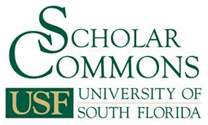Home > Open Access Journals > JSS > Vol. 8 > No. 1 (2015)
Author Biography
At the University of Nebraska Omaha (UNO), Drs. Ligon, Harms, and Derrick run a joint laboratory that staffs 19 people to examine the leadership, influence, performance, and cyber capabilities of violent extremist organizations (VEOs). Gina Ligon is an industrial and organizational psychologist who is an assistant professor of management in the College of Business Administration, and Mackenzie Harms is a 4th year doctoral student in industrial and organizational psychology. Douglas Derrick is a computer scientist who is an assistant professor of IT Innovation in the College of Information Science and Technology, and he holds an appointment in the Management Department at UNO. Both Derrick and Ligon hold Director Positions in The Center for Collaboration Science (http://www.unomaha.edu/college-of-business-administration/center-for-collaboration-science/index.php). In the past three years, this team has worked on federal contracts from United States Strategic Command, Department of Homeland Security, National Institute of Justice, and the National Science Foundation.
DOI
http://dx.doi.org/10.5038/1944-0472.8.1.1436
Subject Area Keywords
Asymmetric warfare, Counterintelligence, Counterterrorism, Cybersecurity, Homeland security, Information operations, Nonstate actors, Strategic communications, Terrorism / counterterrorism, Violent extremism
Abstract
ISIS has run the most effective social media marketing campaign in history. In fact, violent extremist organizations (VEOs) market their ideology and organizations to a global audience in ways that rival even the savviest of conventional organizations. However, applying marketing theory and methodology to study VEOs has not been done to date for the security community. Thus, the goal of the present effort is to use a novel lens used to apply the marketing strategies of conventional, for-profit organizations to examine the impact of VEO reputation and legitimacy on VEO performance. We coded tactics used by VEOs such as ISIS to establish a strong brand reputation, and examined the relationship between branding strategies and markers of performance (e.g., recruitment and fundraising) using a sample of 60 historically notable VEOs spanning a variety of ideologies, cultures, and periods of peak performance. The primary contribution of studying such a diverse sample of VEOs is the identification of how branding strategies can predict recruitment of talented personnel, financial sources, and organizational capacity for violence. Two key findings discussed are (1) VEOs market and differentiate themselves via malevolently innovative attacks, and (2) even negatively-toned media coverage is related to their long-term fundraising viability.
Acknowledgements
We would like to thank Drs. Erin Pleggenkuhle-Miles and Michael Breazeale for initial contributions to the framing of this research project. In addition, this research was supported by the Department of Homeland Science and Technology Directorate’s Office of University Programs through Award Number 2012-ST-061-CS0001, Center for the Study of Terrorism and Behavior (CSTAB 1.12) made to START to investigate THEME: 1 the role of social, behavioral, cultural, and economic factors on radicalization and violent extremism. The views and conclusions contained in this document are those of the authors and should not be interpreted as necessarily representing the official policies, either expressed or implied, of the U.S. Department of Homeland Security or START.
Recommended Citation
Ligon, Gina Scott; Harms, Mackenzie; and Derrick, Douglas C.. "Lethal Brands: How VEOs Build Reputations." Journal of Strategic Security 8, no. 1 (2015)
: 27-42.
DOI: http://dx.doi.org/10.5038/1944-0472.8.1.1436
Available at:
https://digitalcommons.usf.edu/jss/vol8/iss1/3

